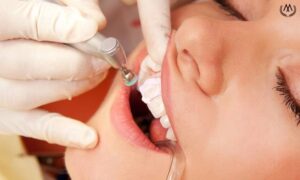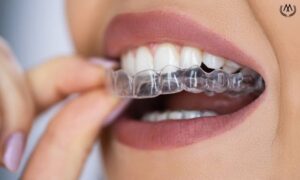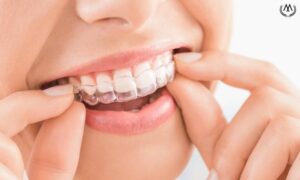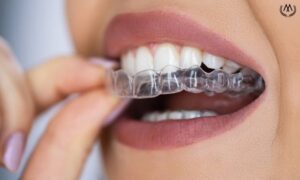Dental correction treatments play an important role in both aesthetic and functional aspects. When choosing between traditional braces and clear aligners (such as MK Aligners), it is essential to understand the advantages and disadvantages of each method. In this article, we will explore the key differences between MK Aligners and traditional braces.
1. Aesthetic Appearance
MK Aligners offer a more aesthetically pleasing solution due to their transparent structure. Users achieve a less noticeable appearance while wearing these aligners. In contrast, traditional braces can be more obvious and uncomfortable because of their metal components. Aesthetic concerns are especially important for adult individuals, which is why MK Aligners may be preferred.
2. Comfort
Clear aligners are generally more comfortable as they are designed to fit snugly over the teeth. With MK Aligners, there is no discomfort caused by metal wires and brackets. Additionally, the soft plastic material of the aligners reduces the risk of irritating the mouth’s soft tissues. Traditional braces, however, may be uncomfortable for some patients and can cause irritation to the soft tissues in the mouth.
3. Treatment Process and Timing
While treatment durations can vary depending on the patient’s condition, clear aligners often provide quicker results. The treatment duration with MK Aligners is adjusted according to the movement of the teeth. Traditional braces usually require a longer treatment period. Furthermore, patients with MK Aligners receive new aligners at specific intervals, while traditional braces require regular dental visits for adjustments.
4. Oral Hygiene and Cleaning
Clear aligners also offer significant advantages in terms of oral hygiene. MK Aligners users can remove their aligners, allowing them to brush and floss their teeth normally. This helps reduce the risk of cavities and gum issues. In contrast, traditional braces can make it more challenging to clean the teeth, as brackets can trap food particles, leading to hygiene problems.
5. Food and Beverage Consumption
When using MK Aligners, patients must remove their aligners before eating. This prevents food from damaging the teeth and keeps the aligners clean. With traditional braces, careful consideration is needed when eating; hard or sticky foods can damage the braces or cause the wires to break.
6. Cost Considerations
The costs associated with dental treatments can vary based on the method used. Generally, MK Aligners may come at a slightly higher price point, but the comfort and aesthetic advantages they provide can make this cost reasonable for many individuals. Traditional braces may have lower initial costs, but additional treatment expenses (such as adjustments) should also be considered.
Conclusion
There are many significant differences between MK Aligners and traditional braces. Factors such as aesthetic appearance, comfort, treatment duration, oral hygiene, food consumption, and cost can all influence patients’ choices regarding their treatment methods. While both methods are effective in correcting teeth, MK Aligners offer a more appealing option for many individuals. It is essential for those considering dental correction treatment to evaluate these differences and determine the best option for themselves.





